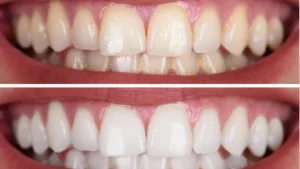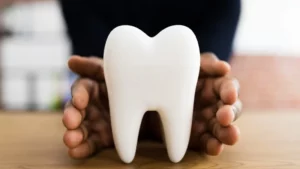Vitamin D is like sunshine for our bodies, playing a vital role in keeping us healthy. But in a unique place like Alaska, where sunlight can be scarce, knowing how much vitamin D to take becomes essential. So, the question “How Much Vitamin D Should I Take in Alaska?” is crucial.
Think of it as giving your body the right fuel. Vitamin D helps absorb calcium, making bones strong, and keeping our immune system ready to tackle any challenges. However, Alaska’s location means less sunlight, which our skin needs to produce this vitamin naturally.
What is Vitamin D?
Vitamin D is a superhero nutrient that helps your body absorb calcium, making your bones strong and your teeth healthy.
It’s like the glue that holds your skeleton together. Not just that, it also has a secret power – it boosts your immune system, making it your shield against illnesses.
How Your Skin Makes Vitamin D
Imagine your skin as a factory that produces vitamin D when it meets sunlight. When sunlight touches your skin, a special process starts, creating this essential nutrient.
It’s your body’s natural way of catching some sunshine magic.
Read More: 14 Signs of Vitamin D Deficiency

Finding Vitamin D in Food
Sunlight isn’t the only way to get your dose of vitamin D. Some foods, like fatty fish (salmon, mackerel), egg yolks, and fortified milk, cereals, and orange juice, contain vitamin D too. Think of them as tasty vitamin D delivery systems.
The Role of Latitude
The earth’s tilt plays a role in the sun’s intensity. The closer you are to the equator, the more direct sunlight you get.
But in Alaska, which is far from the equator, the sunlight has to travel through a thicker layer of the atmosphere, leading to weaker UVB rays. This makes vitamin D production a bit trickier.
Striking a Vitamin D Balance
You might be tempted to soak up the sun for hours, but remember, moderation is key. Too much sun can lead to sunburn and other skin woes.
Aim for short bursts of sun exposure, like a quick walk outside, to keep your skin happy and vitamin D levels in check.
Vitamin D and Sunlight in Alaska
Living in the stunning landscapes of Alaska comes with a unique sunlight challenge. Due to its high latitude, the amount of sunlight varies dramatically throughout the year.
The cold winter months bring extended periods of darkness, making it tougher for your skin to meet the sun’s vitamin D-boosting rays.
The Winter Sun and Its Angle
In Alaska’s winter, the sun’s rays have to travel at an angle through the atmosphere.
This journey makes them less intense and less effective at triggering the vitamin D synthesis process in your skin.
As a result, getting enough vitamin D from sunlight alone becomes quite the puzzle.
Read Also: What If I Forgot to Give My Baby Vitamin D Drops?
Making the Most of Limited Sunlight
Don’t let the unique Alaskan sunlight situation get you down. When the sun does shine, even during winter, make an effort to catch those rays.
Bundle up and take a brisk walk outside to let your skin soak up whatever sunshine it can. It’s a small yet effective step toward maintaining your vitamin D levels.

The Role of Latitude in Sunlight
Alaska’s position on the map, far from the equator, means that sunlight has a longer journey to reach your skin.
This extended travel weakens the UVB rays, which are essential for vitamin D production. Remember, the lower the angle of the sun, the less effective it is at triggering the vitamin D synthesis process.
Sunlight and Mood in Alaska
Apart from vitamin D, sunlight also plays a role in your mood. Sunlight helps your body produce serotonin, often called the “feel-good” hormone.
So, when you’re in Alaska and facing reduced sunlight, it’s natural to feel a bit down. This is where other mood-boosting activities and maybe even light therapy lamps can lend a hand.
Balancing Sun Exposure and Protection
While it’s important to catch those rays, you must strike a balance. You want to get enough sunlight for vitamin D but avoid overexposure that could lead to sunburn or skin damage.
Think about short bursts of sun, like a morning walk, and protect your skin with sunscreen and appropriate clothing.
Dietary and Supplemental Sources of Vitamin D
Vitamin D-Rich Foods
When the sun isn’t at its brightest, your diet can step in to save the day. Certain foods are packed with vitamin D. Think of fatty fish like salmon and mackerel – they’re like little vitamin D treasures from the sea.
Also, don’t forget about egg yolks and fortified foods like milk, cereals, and even orange juice. Including these foods in your meals is a smart way to amp up your vitamin D intake.
Getting Vitamin D from Fortified Foods
Fortified foods are regular foods that have extra vitamins added to them. It’s like giving them a superpower boost.
In places like Alaska where sunlight is scarce, fortified foods can be your secret weapon against vitamin D deficiency. Keep an eye out for labels that say “fortified with vitamin D” to make the most of them.
Read Also: Vitamin D Magnesium and Turmeric Lemonade

Supplements: A Vitamin D Backup
Sometimes, even the best diet can’t provide all the vitamin D your body needs, especially in places with limited sunlight like Alaska.
This is where supplements come into play. Vitamin D supplements are like little vitamin pills that can give your levels a boost.
But remember, it’s essential to talk to your healthcare provider before adding any supplements to your routine.
Determining the Right Dosage
The amount of vitamin D you need can vary based on factors like age, sex, and health conditions.
Your healthcare provider can guide you on the right dosage to meet your specific needs. It’s like having a personalized vitamin D plan tailor-made for you.
The Sunshine Vitamin and Calcium
Vitamin D and calcium are like the dynamic duo of bone health. Vitamin D helps your body absorb calcium from the food you eat.
So, even if you’re getting enough calcium, without sufficient vitamin D, your bones might miss out on the calcium goodness.
Monitoring Vitamin D Levels
To know if you’re getting enough vitamin D, a blood test can come to the rescue. This test measures the level of vitamin D in your blood and helps your healthcare provider determine if you need more sunlight, dietary adjustments, or supplements.
Conclusion
In the Land of the Midnight Sun, understanding how to maintain adequate vitamin D levels is crucial.
Vitamin D, often referred to as the “sunshine vitamin,” plays a pivotal role in bone health, immune function, and overall well-being.
However, Alaska’s unique geographical position challenges the availability of sunlight, which is essential for natural vitamin D synthesis.
So, what’s the solution? Balancing sunlight exposure, consuming vitamin D-rich foods, and considering supplements under medical guidance can help bridge the gap.
Fortified foods, such as milk and cereals, provide an additional boost. Remember, moderation in sun exposure is key, and consulting your healthcare provider ensures a personalized approach to meeting your vitamin D needs.
As you embark on your journey toward optimal health, armed with knowledge about vitamin D’s importance and its interaction with Alaska’s sunlight patterns, you’re empowered to make informed choices that benefit your well-being.
FAQs
1. Is sunlight the only source of vitamin D?
Yes, sunlight is a natural source of vitamin D. When your skin is exposed to sunlight, it triggers vitamin D synthesis. However, dietary sources and supplements can also contribute to your vitamin D intake.
2. How much sun exposure do I need in Alaska?
Short, regular sun exposure is recommended. Aim for about 15 minutes of sun on your face, arms, or legs a few times a week. Longer exposure doesn’t necessarily mean more vitamin D synthesis.
3. Can I get enough vitamin D from my diet alone?
It can be challenging, especially in Alaska. While foods like fatty fish and fortified items help, sunlight remains a crucial source of vitamin D.
4. Can I overdose on vitamin D from the sun?
Excessive sun exposure doesn’t lead to vitamin D toxicity. However, prolonged sun exposure without protection can cause skin damage.
5. Are supplements necessary in Alaska?
For many, supplements are beneficial but consult a healthcare provider first. They can help fill gaps, especially during the darker months.
6. Can vitamin D affect my mood?
Yes, vitamin D plays a role in mood regulation. In Alaska, where sunlight is limited, mood changes might be more noticeable. Consider lifestyle adjustments and consult a healthcare professional if needed.
7. Are there risks to taking vitamin D supplements?
Inappropriate use can lead to excessive levels. It’s vital to follow medical advice on dosage and duration to prevent toxicity.
8. Can I rely solely on fortified foods for vitamin D?
Fortified foods are beneficial, but they might not provide all your needs. They’re a valuable supplement to sunlight and other sources.
9. How often should I monitor my vitamin D levels?
Consult your healthcare provider for personalized advice. Monitoring is important, especially if you’re taking supplements, to ensure your levels stay within a healthy range.
References
- Holick MF. Vitamin D: importance in the prevention of cancers, type 1 diabetes, heart disease, and osteoporosis. Am J Clin Nutr. 2004;79(3):362-371.
- Rosen CJ. Clinical practice. Vitamin D insufficiency. N Engl J Med. 2011;364(3):248-254.
- Cashman KD, Dowling KG, Škrabáková Z, et al. Vitamin D deficiency in Europe: pandemic? Am J Clin Nutr. 2016;103(4):1033-1044.
- Bischoff-Ferrari HA, Dawson-Hughes B, Staehelin HB, et al. Fall prevention with supplemental and active forms of vitamin D: a meta-analysis of randomised controlled trials. BMJ. 2009;339:b3692.
- National Institutes of Health. Vitamin D Fact Sheet for Health Professionals. Accessed from: https://ods.od.nih.gov/factsheets/VitaminD-HealthProfessional/



